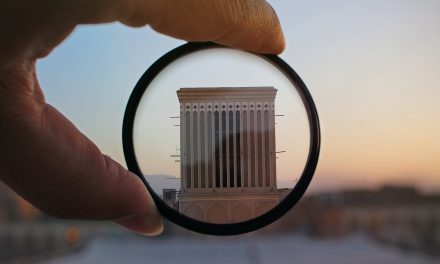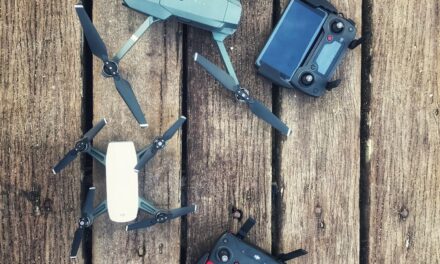The greatest protective filters need to absorb the bumps, dings, and scratches that may otherwise ruin an expensive lens. Simply said, they’re amongst the most cost-effective methods to add a layer of protection to your lens. If anything had to fall to the ground and break, wouldn’t you prefer that this was a $20 filtration than it is on the element of either a $1000 lens? Lenses are priceless, delicate, and often costly. Yep. We believed it.
Other uses for protective filters are also possible. You may buy a UV screen, which is intended to filter out undesirable ultraviolet radiation to reduce the quantity of haze in a picture. Some are merely transparent pieces of glass with no other use. Even if employing digital sensors makes this something leftover from the age of film, it may still be helpful and surely won’t harm.
Though it would cost anything other than a clear or UV filter, you might also consider utilizing one of the best polarising filters(opens in a new tab) as little more than a protective filter. A skylight filter is another option; it was first employed to warm up photos with a pink, orange, or purple color cast to avoid turning too blue during the film period. Skylight filters are excellent protective filters now that we have custom white balance + RAW format, making them far less required.
Utilizing a lens hood alone is not as effective as using a lens protection filter. Grit and dirt may easily destroy the front element, which is a very crucial component if you’re shooting outside in challenging circumstances.
One of the finest protective filters is better than putting a lens hood on and praying for the best or keeping your glass bare. While lens hoods provide some protection, the front element may still be easily scratched by sand or grit. The greatest protection, however, will keep pesky, minute particles from getting onto the glass
You may find the top protection, UV, and skylight filters below, no matter what kind you want to buy.
1. K&F Conceptual UV Filtration Ultra Slim
Japanese optical perfection, while being reasonably priced, is one of the main selling points for this slender protective UV filter.
Another boast is that this double filter has a transmittance of 99 percent, compared to ordinary UV filters’ transmittance of just around 90 percent. Given the cost of this one, we won’t quarrel, particularly because the threaded front portion of its metal structure makes it easy to attach a lens cover for an additional degree of security.
Naturally, the multi-coated glass, in this instance, shields against the damaging effects of UV radiation and removes haze that may give the image a bluish hue. With its promises of superior light transmittance, ideal clarity, and color accuracy, it seems like you can’t go wrong with this choice.
2. Uth UV Filter Plus+
While UV filters might be seen as inexpensive, throwaway items (see our next page for an example), one new business opts to view them more sustainably. For individuals who prefer the UV aspect of the filter much more than the protective element, Urth, a manufacturer of a range of high-quality, premium filters, is a perfect option.
A high-end item that can block up to 99.6percent of the overall ultraviolet radiation is the Urth UV Filter Plus+. Its German B270 SCHOTT glass is covered by 30 layers of nano-coating, making it simple to clean, well-protected against water, dirt, oil, and other smudges, and allowing for excellent light transmission. You are almost certain to get a size that suits your lens, thanks to the variation in size from 37mm to 95angstroms filter thread.
For each bandpass filter, Urth also plants a tree, making your decision impactful. However, they cost more than many other available solutions, given everything.
3. AmazonBasics UV Filter
This UV protection filter, a part of Ebay’s “AmazonBasics” line, will fit anyone who doesn’t like using a piece of equipment with “Basics” emblazoned on it in bold, white letters. It lacks the metal frame of something like the K&F Idea filter, and the intricate coatings of the Nokia UV HD3 filter farther down the scale, but it is inexpensive and functional despite its lack of frills and unique features.
Make careful to use double your lens before clicking the “Actually purchase” button, but other than that, you should be good to go. The thread range here only goes as low as 52mm, but many on this list go as low as 37mm.
4. Hoya UV Digital Hmi Screw-in Filter
Because Hoya says their Digital HMC filter line is ideal for use with digital SLRs, as well as being suited for use with 35mm SLRs and ideal for black and white photography, we chose this thin profile sample.
To cover all bases, this multi-purpose fine-weather filter is offered in a large selection of diameters, ranging from 37mm to 95micrometres (incrementally increasing in price).
The manufacturer says that even though it is intended to prevent UV rays, it is safe to always keep this mask on your lens for additional protection. The multi-coated surface, made from heat-resistant tempered glass, is said to reduce flare, ghosting, and reflections while boosting light transmission.
5. Hoya UV HD3 filter
Users of the most recent webcams with high megapixel counts are targeted by this top-tier protective UV filter, which comes at a higher price.
Positively, the “HD3” has had an incredible 32 films of anti-reflecting coating put to its ocular UV glass and is one of the most recently produced models accessible.
Hoya claims that its ultra-smooth nanolayer is 800% tougher than the HD2 series from the previous generation, providing excellent lens preservation and cleanliness. It includes a water-repellent, stain- and scratch-resistant top layer with an anti-static coating, and any scratches or fingerprints may be removed easily.
The filtering is said to have a 99.7% light risk of transmission and does not affect color balance, contrast, or clarity. It also comes with a limited lifetime guarantee for added peace of mind.
6. Globe UV Lens Filter
Globe, which is marketed as being perfect for distance and professional lenses and is accessible on both sides of the Atlantic, could be a less well-known brand to some. However, this reasonably cost UV filter has German Schott B270 optical glass, which is said to provide the clearest pictures while also decreasing haze and promises to block out 99.8% of ultraviolet radiation
The lens is naturally protected from water, dirt, and scratches, thanks to its other important feature. Users may comfortably leave the filtration on their lenses at all times, according to Globe, which says that its filters won’t have an impact on the exposure settings of digital cameras.
Globe has pledged to establish five trees for every one of its goods sold as an added bonus for those who care about the environment.
7. Hoya Skylight 1B HMC
In addition to increasing light transmission and reducing reflections, this filter option is available in a wide variety of thread sizes, allowing photographers to shield pricey and valuable lenses from dirt, moisture, and scratches.
Hoya states that its multi-coating may lessen the extreme bluishness that can occur in outdoor color photography, particularly when there is a clear blue sky. It also helps to prevent unwanted lens flare and ghosting.
As we said at the opening, whether or not this is worth considering if you’re shooting with a digital camera rather than a film camera is debatable. Still, at least, in this case, we have a ready-made, affordable disc that we can use to preserve our pricey lenses.
8. Tiffen ultraviolet protection filter
This affordable general lens protection option from Tiffen, a filter stalwart, has a ten-year guarantee and is again intended to lessen the blue-ish tint of daylight while aiding in the absorption of UV rays.
According to Tiffen, this filter is especially helpful when capturing pictures at a high altitude or near water. Another benefit is that this Tiffen option may be used with other filters as the filter doesn’t offer any extra coloration or contrast.
A reasonable choice that some may think offers excellent value.







